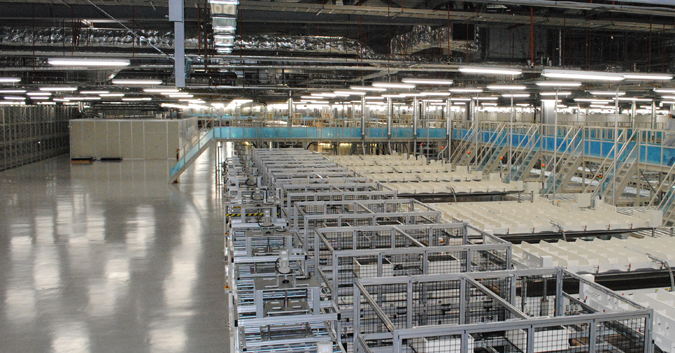Solar-Panel Giant Poised to Get Even Bigger

One of the world’s fastest-growing solar-panel manufacturers, Tokyo-based Solar Frontier, may soon increase production still more with help from its oil-company-funded parent company, Showa Shell Sekiyu.
In 2007, Solar Frontier built its first factory, which had the capacity to make 20 megawatts of solar panels a year. It’s since built a plant every two years, culminating in a 900-megawatt plant in Kunitomi, Japan, that started production last year. Now it’s evaluating building a fourth plant in Japan after it was selected by the Japanese government to receive funding to build a factory. It also plans to build a new plant in the Middle East in connection with Saudi Aramco and Royal Dutch Shell. Saudi Aramco owns 15 percent of Showa Shell, and Shell owns 35 percent. Solar Frontier has seen significant demand for its solar panels: for example, earlier this year, the company announced that it would supply solar panels for a large (up to 150-megawatt) solar-power plant in California.
Solar Frontier makes CIGS solar panels, which are based on a thin film of semiconductor made from copper, indium, gallium, and selenium. The semiconductor material is far better at absorbing sunlight than silicon, so less of it is required, and it can be processed using fewer steps than silicon. Both attributes could reduce the cost of a solar panel. But it’s proved difficult to manufacture CIGS panels at large scales and at costs low enough to compete with the incumbent technology. Dozens of companies have tried, but so far, they make only relatively small amounts of solar panels. One such company, Solyndra, famously failed to reduce the costs of the process and ran out of money.
Solar Frontier, with nearly a gigawatt of solar-panel production capacity, is the notable exception. The company’s direct competitors include other CIGS companies, but also silicon solar-panel manufacturers and First Solar, which makes thin-film solar panels based on cadmium telluride. Taken together, these companies make most of the world’s solar panels. Solar Frontier declined to give specific cost figures, but it says its costs are competitive, even with low-cost Chinese solar-panel makers using conventional silicon technology. Because its panels work well in low-light conditions, they can generate more electricity than silicon solar panels of the same peak power output. The company says this allows its customers to earn more revenue from solar-panel installations than they could using other solar panels.
Since starting work on the technology decades ago, the company has developed a number of innovations, says Gregory Ashley, chief operating officer of the American operations of Solar Frontier. It has developed techniques for ensuring the precise composition of the CIGS material, and developed a technique for adding sulfur to the mix to improve power output. It learned how to make the thickness of the material extremely uniform to aid in patterning it to make solar cells, and eliminated the need for cadmium, a toxic metal. The innovations brought down manufacturing costs and allowed the company to achieve the world record for CIGS solar-panel efficiency.
Typical solar panels coming off its factory floor are 13 percent efficient—lower than for silicon solar panels, but higher than panels made by one of its most direct competitors, First Solar, which makes thin-film solar panels from cadmium and tellurium. First Solar’s panels are typically about 12.4 percent efficient. That company says it will soon increase panel efficiency to 14 percent, making it competitive with many silicon solar panels.
Erten Eser, a scientist at the Institute for Energy Conversion at the University of Delaware, says the key to the company’s success is its stable funding. Decades-long development for solar panels is typical—it took that long to reach large-scale production of silicon panels and First Solar’s thin-film panels, the two technologies that account for almost all solar-panel production in the world.
Like First Solar, Solar Frontier hasn’t had to worry about having its funding cut off. “Solar Frontier never had problems with money. They never had to answer to any venture capitalists,” Eser says. “At the end of the day, of course, they’re going to be successful when they have time and money working on their side.”
Keep Reading
Most Popular
Large language models can do jaw-dropping things. But nobody knows exactly why.
And that's a problem. Figuring it out is one of the biggest scientific puzzles of our time and a crucial step towards controlling more powerful future models.
The problem with plug-in hybrids? Their drivers.
Plug-in hybrids are often sold as a transition to EVs, but new data from Europe shows we’re still underestimating the emissions they produce.
Google DeepMind’s new generative model makes Super Mario–like games from scratch
Genie learns how to control games by watching hours and hours of video. It could help train next-gen robots too.
How scientists traced a mysterious covid case back to six toilets
When wastewater surveillance turns into a hunt for a single infected individual, the ethics get tricky.
Stay connected
Get the latest updates from
MIT Technology Review
Discover special offers, top stories, upcoming events, and more.